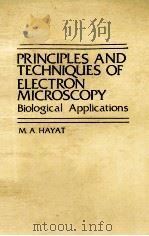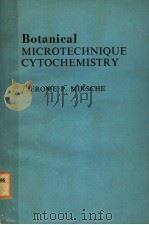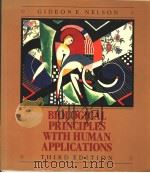《PRINCIPLES OF BIOLOGICAL MICROTECHNIQUE》
| 作者 | 编者 |
|---|---|
| 出版 | 未查询到或未知 |
| 参考页数 | 357 |
| 出版时间 | 没有确切时间的资料 目录预览 |
| ISBN号 | 无 — 求助条款 |
| PDF编号 | 819498748(仅供预览,未存储实际文件) |
| 求助格式 | 扫描PDF(若分多册发行,每次仅能受理1册) |
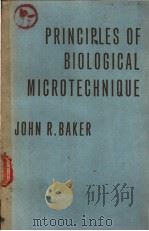
PART Ⅰ:FIXATION15
1Introduction to Fixation19
2 The Reactions of Fixatives with Proteins.1.The Visible Effects31
3 The Reactions of Fixatives with Proteins.2.The Chemi-cal Changes44
4 The Reactions of Fixatives with Tissues and Cells:Methods of Research66
5 Primary Fixatives Considered Separately.1.Coagulants89
6 Primary Fixatives Considered Separately.2.Non-coagulants111
7 Fixative Mixtures139
PART Ⅱ:DYEING153
8Introduction to the Chemical Composition of Dyes155
9 The Classification of Dyes169
10 The Direct Attachment of Dyes to Tissues187
11 The Indirect Attachment of Dyes to Tissues207
12 The Differential Action of Dyes228
13 Metachromasy243
14 The Blood Dyes262
15 Introduction to Vital Colouring274
16 The Mode of Action of Vital Dyes284
17 A Comparison between Dyeing and other Processes of Colouring296
APPENDIX313
1The composition of solutions expressed as percentages:conventions adopted in this book313
2 Experiments on fixation314
3 Experiments on dyeing321
4 Use of the word‘chromatin’327
5 Notes on spelling329
List of References331
Index345
Fig.1.Graphical representation of the changes in volume undergone by gelatine/albumin gels during 18 hours in various fixatives36
Fig.2.Pipettes used in the measurement of the rate of penetration of fixatives into gelatine/albumin gel38
Fig.3.Graph showing the rate of penetration of fixatives into gelatine/albumin gel39
Fig.4.Protein coagula seen under the microscope41
Fig.5(plate).A,lobes of the liver of the rabbit left for 25 hours in fixatives and then cut across B—E,photomicrographs illustrating Young’s ex-periments on the addition of indifferent salts to fixatives267
Fig.6.A cell from the intestine of Oniscus (woodlouse),fixed in mercuric chloride:to show the coagulation of protoplasm67
Fig.7.Graph showing the thickness of rabbit-liver fixed by a saturated aqueous solution of mercuric chlor-ide in various times68
Fig.8(plate).The effect of ftxatives on cultured cells from the chorioid or sclerotic coat of the eye of the chick embyro70
Fig.9(plate).Sections of the testis of the mouse,to show good and bad fixation74
Fig.10.Outlines of the fully-grown primary spermatocyte of the snail,Helix aspersa,to show the effect of fixa-tion and subsequent treatment on the size of the cell79
Fig.11.Graph showing the effect of fixation and subsequent treatment on the volume of the nuclei of cartilage-cells80
Fig.12.Graph showing how the volume of the eggs of Ar-bacia pustulosa is affected by the addition of non-fixative salts to formaldehyde solution82
Fig.13.Diagram showing the coefficient of elasticity of the belly-muscle of the cat,fixed in various ways87
Fig.14.Graphical representation of the ions present in a 2.5% aqueous solution of potassium dichromate and in a solution of chromium trioxide containing the same weight of chromium105
Fig.15.Photomicrographs of lecithin smeared on glass.A,in distilled water,showing outgrowth of myelin forms;B,in a concentrated solution of calcium chloride,showing absence of myelin forms115
Fig.16.Three Ringk?rner and a cap or hood (Kapuze)formed by partial solution of lipid globules:osmium preparations125
Fig.17.Graph showing the transmission of light through a layer I cm thick of basic fuchsine, 0.00062% aqueous161
Fig.18.Graph showing the reciprocals of the transmission of light through a layer I cm thick of basic fuchsine,0.00062% aqueous162
Fig.19.Graph showing the optical density of a layer I cm thick of basic fuchsine, 0.00062% aqueous163
Fig.20.Graph showing the transmission of light through a layer I cm thick of acid fuchsine, 0.00293% aqueous165
Fig.21(plate).Haematoxylon campechianum172
Fig.22(plate).The cochineal insect and its food-plant176
Fig.23(plate).Apparatus for cataphoretie experiments with dyes189
Fig.24(plate). Ehrlich at the age of 24193
Fig.25.Diagrammatic representation of the dyeing of coilodion by typical basic,amphoteric,and acid dyes194
Fig.26.Diagrammatic representation of the dyeing of gela-tine by typical basic,amphoteric,and acid dyes195
Fig.27.Graph showing the transmission of light of various wave-lengths through toluidine blue solution250
Fig.28(coloured plate).A,human blood from a patient with mycloid leucaemia;coloured by Ehrlich’s‘Triacid’ dye (from Ehrlich & Lazarus169)B,normal human blood dyed by Leishman’s method (from Carleton & Short,106 by permission of Messrs Longmans,Green & Co.)264
Fig.29(plate).Ehrlich at about the time when his work on vital dyes was merging into chemotherapy274
《PRINCIPLES OF BIOLOGICAL MICROTECHNIQUE》由于是年代较久的资料都绝版了,几乎不可能购买到实物。如果大家为了学习确实需要,可向博主求助其电子版PDF文件。对合法合规的求助,我会当即受理并将下载地址发送给你。
高度相关资料
-
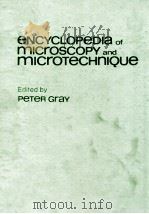
- the ENCYCLOPEDIA OF MICROSCOPY AND MICROTECHNIQUE
- 1973 VAN NOSTRAND REINHOLD COMPANY
-

- BIOLOGICAL PRINCIPLES WITH HUMAN PERSPECTIVES
- 1980年 JOHN WILEY&SONS
-

- PRINCIPLES AND TECHNIQUES OF SCANNING ELECTRON MICROSCOPY BIOLOGICAL APPLICATIONS VOLUME 5
- 1976 VAN NOSTRAND REINHOLD COMPANY
-

- BIOLOGICAL PRINCIPLES WITH HUMAN APPLICATIONS THIRD EDITION
- 1989 JOHN WILEY & SONS
-

- PRINCIPLES AND TECHNIQUES OF ELECTRON MICROSCOPY BIOLOGICAL APPLICATIONS VOLUME 4
- 1974 VAN NOSTRAND REINHOLD COMPANY
-

- PRINCIPLES OF BIOLOGICAL REGUALTION AN INTRODUCTION TO FEEDBACK SYSTEMS
- 1973 ACADEMIC PRESS
-

- Handbook of biological control principles and applications pf biological control
- 1999 academic press
提示:百度云已更名为百度网盘(百度盘),天翼云盘、微盘下载地址……暂未提供。➥ PDF文字可复制化或转WORD



